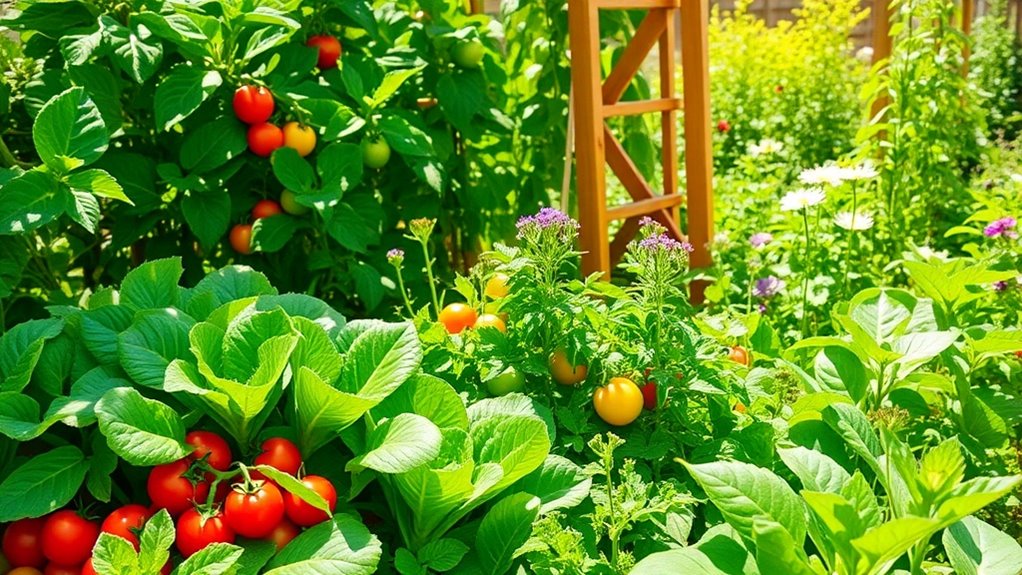How I Got My Peppers to Thrive in a Small Garden
Creating a flourishing pepper garden in tight spaces is like painting a masterpiece with limited colors. You need to strategically select the right varieties and prepare your soil meticulously. Understanding this balance can transform your small plot into a vibrant source of peppers. But how exactly do you maximize every inch while ensuring your plants thrive? Let’s explore the essential strategies that can elevate your gardening experience.
Choosing the Right Pepper Varieties
When selecting pepper varieties for a small garden, it’s crucial to focus on types that not only fit your space but also your culinary preferences. Compact varieties, such as jalapeños or mini bell peppers, thrive in limited areas. Prioritize those suited for your climate and ensure you understand pepper plant care—like watering and sunlight—so you can maximize growth and yield efficiently in your confined garden space. Additionally, consider companion planting, as pairing peppers with certain plants can enhance flavor and deter pests, leading to a more productive garden.
Ideal Soil Conditions for Peppers
To grow thriving peppers, understanding the ideal soil conditions is essential, as healthy soil directly influences plant vitality and fruit production.
Peppers prefer well-draining soil rich in organic matter, with a pH between 6.0 and 6.8.
Incorporating compost boosts nutrient levels, while consistent moisture promotes robust growth.
Regular soil testing helps you maintain optimal conditions, ensuring your peppers flourish. Additionally, incorporating essential soil ingredients can significantly enhance soil health, supporting the overall growth of your pepper plants.
Maximizing Space With Vertical Gardening
After establishing ideal soil conditions, maximizing space in a small garden becomes a pivotal strategy for growing peppers. Vertical gardening allows you to utilize upward space effectively. Consider using trellises, wall-mounted planters, or hanging pots to enhance productivity while saving ground space. Additionally, many vegetables that thrive in containers can benefit from this innovative approach. Below is a simple guide to different vertical gardening options.
| Type | Description |
|---|---|
| Trellis | Supports climbing varieties |
| Wall Planter | Attached to walls, space-saving |
| Hanging Pots | Suspended plants, easy access |
| Shelving | Multi-tiered planting options |
| Vertical Frame | Sturdy structure for various plants |
Effective Watering Techniques
Effective watering techniques play a crucial role in the successful cultivation of peppers, especially in small gardens where resources are limited.
Focus on consistent moisture without overwatering. Use drip irrigation or a soaker hose to deliver water directly to the soil.
Water early in the morning to reduce evaporation and allow the plants to absorb moisture before the heat of the day. Additionally, monitoring signs that indicate when your plants need water can help ensure your peppers receive the right amount of hydration.
Pest Management Strategies
As you cultivate peppers in your small garden, managing pests becomes essential for a healthy yield.
Utilize integrated pest management by regularly inspecting plants for signs of trouble. Encourage beneficial insects like ladybugs, and use organic pesticides when necessary.
Crop rotation and companion planting can also deter pests effectively. Additionally, consider applying natural sprays to repel common pests like aphids and enhance your garden’s ecosystem.
These strategies ensure your peppers flourish while minimizing damage from unwanted invaders.
Harvesting for Continued Growth
Successful pest management sets the stage for a fruitful harvest, and knowing when and how to harvest your peppers is just as important for encouraging continued growth.
-
Pick peppers at their peak ripeness for optimal flavor.
-
Use sharp, clean shears to avoid plant damage.
-
Harvest regularly to stimulate further fruit production.
-
Remove overripe fruits to focus energy on new growth.
-
Monitor plants post-harvest for further care needs.
Additionally, being aware of issues such as peppers turning black ensures you can maintain a healthy plant and maximize yield.





